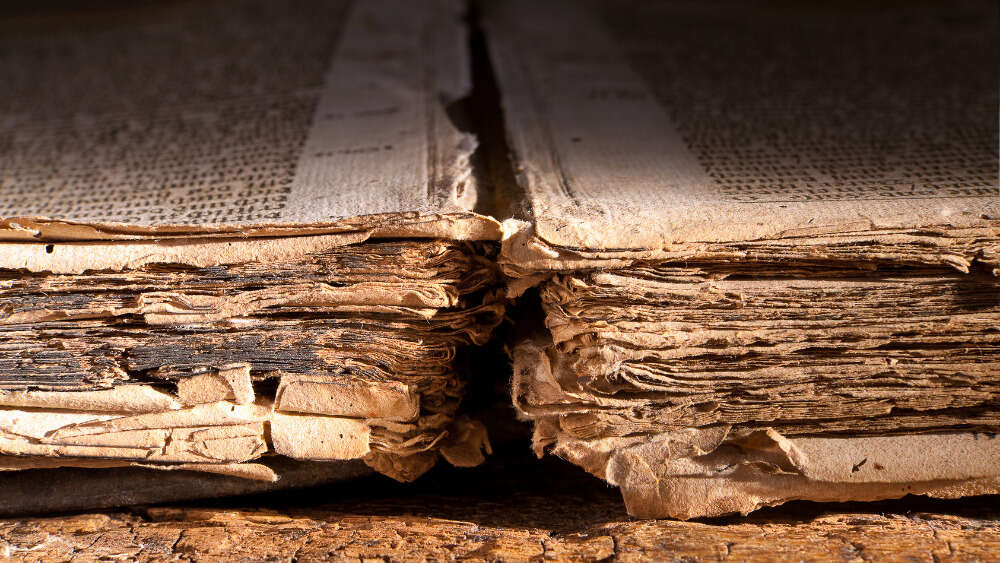In these days of quickly typed emails and text messages, typos can seem so common that they almost don’t matter anymore. There’s often an edit button on social media that can quickly rectify the situation — or at least the ability to respond with a * and correction.
Unfortunately, corrections were difficult to make in 1631 when printers Robert Barker and Martin Lucas printed 1,000 copies of the Bible with a typo of biblical proportions. “Thou shalt commit adultery,” read Exodus 20:14 – missing the small but essential word “not.”
When the error was discovered a year later—a troubling detail indicating that a thousand Bible owners hadn’t gotten around to reading the Ten Commandments—Barker and Lucas were summoned to the court of King Charles I.
Charles admonished them for their incompetent artistry and the scandalous result, stripped them of their printing license, and fined them £300. All but twenty texts were destroyed.
With only twenty copies escaping royal wrath, the controversial text—The Wicked Bible, The Sinners’ Bible, and The Adulteress Bible—is a rare find today. And even more so in the Southern Hemisphere, where no specimens have been found.
But that changed yesterday when Chris Jones, an associate professor of medieval studies at the university and fellow of the Society of Antiquaries in London, announced that a copy had been found in Christchurch, New Zealand.
A former student of Jones brought the copy to him in 2018. Her family had acquired it two years earlier in a deceased estate sale of its late owner, bookbinder Don Hampshire. Hampshire came to New Zealand from the United Kingdom in the late 1950s and died in Christchurch in 2009. No records have been found that he has revealed his ownership of the scandalous book.
“It’s not something you just walk into an office when you’ve found one in a Christchurch garage.”
Jones’s former student told him she believed it was a “bad” Bible, but he was “very incredulous because these are not ordinary objects.”
“It’s not something you just walk into an office when you’ve found one in a Christchurch garage. But I looked at it and thought, wow, this is exactly what my former student thinks it is – it’s a bad bible. I was amazed,” Jones told The Guardian NZ.
As it turns out, the delay in announcing the discovery to the world was not the icy pace of life in New Zealand. Instead, the University of Canterbury in Christchurch kept the discovery secret, giving researchers and bookkeepers enough time to study and preserve the book.
“It’s a mystery, it’s fascinating, and it has made its way around the world,” Chris Jones, an associate professor of medieval studies at the university and fellow of the Society of Antiquaries in London, said Monday.
Jones studied the history of the Bible, stories explaining how mistake was made, and the printing industry of the time. He said that while there are wild theories that it could have been a deliberate act of industrial sabotage by a rival printer, it’s far more likely that the printers, operating in a cutthroat industry, were cutting costs on copy editors. As such, it is an excellent reminder of those who oversee media organizations today.
The Bible is now owned by the Phil and Louise Donnithorne Family Trust. It contained only one illegible name and was in relatively poor condition when rediscovered, with a missing cover, some water damage, and a few pages on the back gone for good. Unlike many other Bibles, the bible contains no family trees, making his past life a mystery.
The specimen, however, contains some unique features and is one of the few specimens with more decorative red and black ink.
The Bible now has a new cover by book and paper curator Sarah Askey, who has preserved it and preserved it for generations to come. She also documented any clues to the book’s history, such as plant remains, human hair, and textile fibers held between the pages.
Despite the illegible handwriting, Jones hopes someone can shed some light on the Bible’s former owner when a digital copy becomes available soon.
